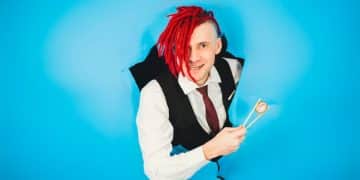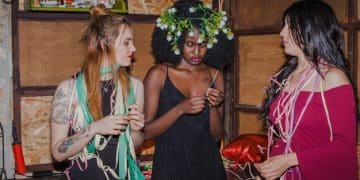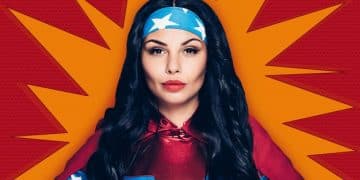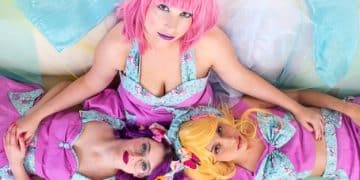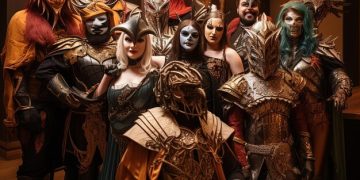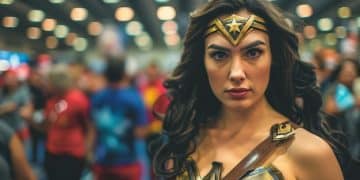The Ultimate Guide to Cosplay Photography in 2025
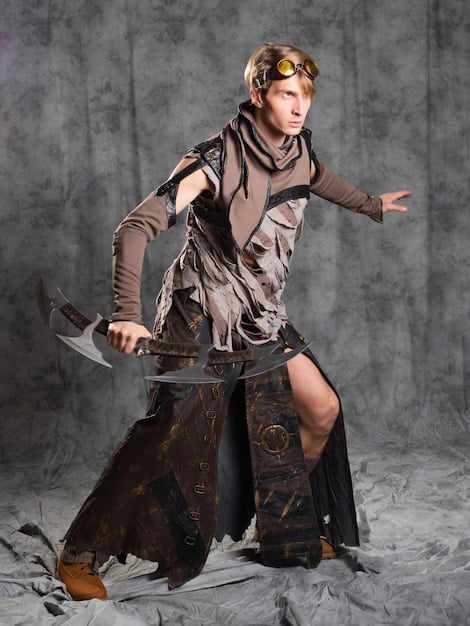
Cosplay photography combines the artistry of cosplay with the technical skill of photography, capturing characters and costumes in stunning detail, creating enduring art for both cosplayers and photographers to admire and share.
Want to capture the magic of cosplay? Cosplay photography brings beloved characters to life through stunning images. This guide will help you create amazing cosplay photos that stand out in 2025.
What is Cosplay Photography?
Cosplay photography is a specialized genre that focuses on capturing cosplayers in character, often in environments that complement their costumes and personalities. It’s more than just taking a picture; it’s about telling a story.
This type of photography requires a unique set of skills, including knowledge of posing, lighting, and post-processing. It also involves understanding the character the cosplayer is portraying.
Why Choose Cosplay Photography?
Cosplay photography offers a creative outlet for both photographers and cosplayers. It allows for collaboration, artistic expression, and the chance to bring imagination to reality.
- Showcase craftsmanship of costumes
- Capture the essence of beloved characters
- Build a portfolio of creative work
- Connect with a passionate community
Cosplay photography is also a rewarding way to support the cosplay community and create lasting memories of incredible costumes and performances.
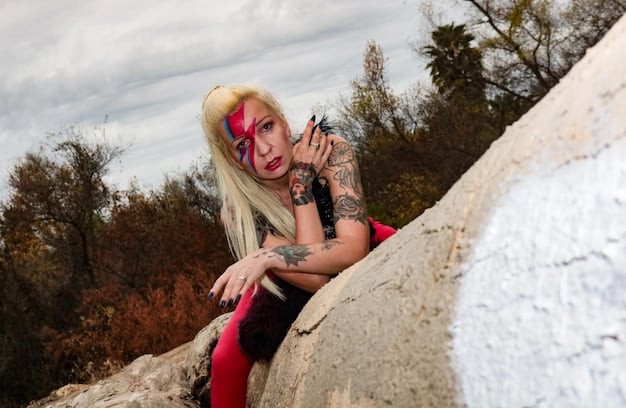
Essential Equipment and Gear
Having the right equipment can significantly enhance your cosplay photography. While you don’t need the most expensive gear, certain items are essential to getting the best shots.
Understanding your equipment and how to use it effectively is just as important as having it in the first place. Practice with your gear to become comfortable with its settings and capabilities.
Cameras and Lenses
A DSLR or mirrorless camera is ideal for cosplay photography, as they offer greater control over settings like aperture, ISO, and shutter speed. Mid-range zoom lenses are versatile for various shooting conditions.
Prime lenses (e.g., 50mm, 85mm) are great for portraits and can create beautiful bokeh. Be sure to pick lenses with a high maximum aperture for good low-light performance.
Lighting Equipment
External flashes and strobes can provide consistent and controllable light, especially in challenging environments. Reflectors can bounce natural or artificial light to fill in shadows.
- Speedlights: Portable and versatile for on-the-go shooting
- Softboxes: Diffuse light for a softer, more flattering look
- Umbrellas: Inexpensive and easy to use for broader light coverage
- Color gels: Creatively adjust the color temperature of your light source
Consider investing in a light meter to accurately measure light levels and ensure proper exposure.
Mastering Posing and Composition
Posing and composition are crucial elements in cosplay photography. Good posing brings the character to life, while strong composition guides the viewer’s eye and creates visual interest.
Effective posing and composition can transform a simple shot into a stunning work of art. Spend time practicing and experimenting to find what works best for each character.
Posing Techniques
Work with the cosplayer to capture poses that reflect the character’s personality and style. Dynamic poses convey strength and action, while relaxed poses show vulnerability and emotion.
Encourage cosplayers to move and interact with their environment to create more natural and engaging photos. Use reference images from the character’s source material as inspiration.
Composition Rules
The rule of thirds involves dividing the frame into nine equal parts and placing key elements along these lines or at their intersections. Leading lines guide the viewer’s eye through the image.
- Symmetry: Create balance and harmony in your photos
- Framing: Use elements in the foreground to frame your subject
- Negative space: Let the subject “breathe” within the frame
Experiment with different angles and perspectives to find unique and engaging compositions. A low angle can make a character appear powerful, while a high angle can create a sense of vulnerability.
Location Scouting and Selection
Choosing the right location is vital for creating impactful cosplay photos. The location should complement the character and enhance the overall story of the image.
Scouting locations ahead of time allows you to plan your shoot and identify potential challenges or opportunities. Consider the time of day and how the light will affect your photos.
Urban Environments
Cities offer diverse backdrops, from gritty alleys to modern skyscrapers. Look for locations that match the character’s world, such as futuristic buildings for cyberpunk cosplays.
Urban environments can also provide interesting textures and patterns that add depth to your photos. Be mindful of crowds and potential distractions. Use them creatively if possible.
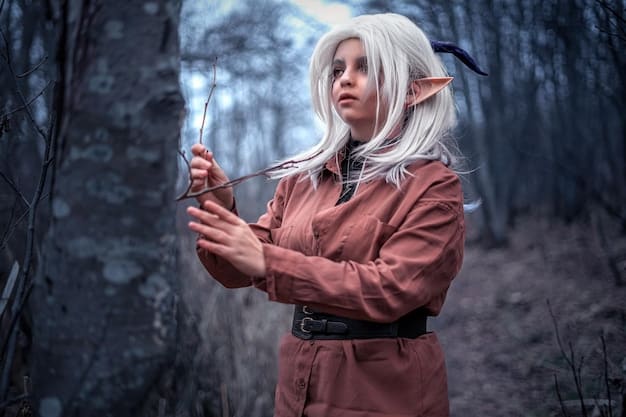
Natural Settings
Parks, forests, and beaches offer beautiful natural backdrops for cosplay photos. Consider the season and how it will affect the colors and textures of the environment.
Natural settings can create a sense of realism and enhance the character’s connection to nature. Be respectful of the environment and leave no trace behind.
Lighting Techniques for Cosplay
Whether you’re shooting indoors or outdoors, understanding the principles of lighting is essential for capturing high-quality cosplay photos. Light can shape the mood and impact of your images.
Mastering lighting techniques allows you to create stunning effects and highlight the details of costumes and characters. Experiment with different light sources and modifiers to find your style.
Natural Light Photography
Shooting in natural light can produce soft, flattering results. The golden hour (the hour after sunrise and the hour before sunset) offers warm, diffused light ideal for portraits.
Overcast days provide even, shadowless light that is perfect for detail-oriented shots. Avoid shooting in harsh midday sun, which can create strong shadows and unflattering highlights.
Artificial Light Photography
Using external flashes and strobes gives you greater control over the light in your photos. Bounce flash off walls or ceilings to create softer, more diffused light.
- Studio strobes for use within a studio setting
- On-camera flash for capturing more casual photos
- Fill flash to reduce shadows, particularly outdoors
- Ring flash to have even lighting, especially for close up
Experiment with different lighting setups to find what works best for each character and location. Consider using color gels to add creative effects to your lighting.
Post-Processing Tips and Tricks
Post-processing is the final step in creating stunning cosplay photos. Editing software allows you to enhance colors, adjust exposure, and remove distractions from your images.
Effective post-processing can elevate your cosplay photos and bring your creative vision to life. Use editing software to refine your images and create a polished, professional look.
Basic Adjustments
Start by adjusting the exposure, contrast, and white balance of your photos. Correct any color casts and fine-tune the highlights and shadows.
Use the healing brush tool to remove blemishes and distractions from the background. Be careful not to over-edit, as this can make the image look unnatural.
Advanced Techniques
Use layers and masks to make selective adjustments to specific areas of your photo. Sharpen your images to enhance detail and texture.
- Use filters to create unique effects
- Use masking and layers to create a unique outcome
- Add vignettes, for improved focus on the main subject
Experiment with color grading to create a specific mood or atmosphere. Be consistent with your editing style to maintain a cohesive look across your portfolio.
| Key Aspect | Brief Description |
|---|---|
| 📸 Equipment | Cameras, lenses, and lighting are key components. |
| 🎭 Posing | Directing cosplayers to reflect their characters well. |
| 📍 Locations | Scouting settings that add to the cosplay’s narrative. |
| 💡 Lighting | Mastering both natural and artificial lighting skills. |
Frequently Asked Questions
▼
Use a wide aperture (f/2.8 or wider) for shallow depth of field, low ISO to minimize noise, and a shutter speed fast enough to freeze motion. Adjust as needed for lighting conditions.
▼
Attend cosplay conventions and events, join online cosplay communities, and reach out to cosplayers on social media. Always ask for permission before taking photos.
▼
Poor lighting, unflattering posing, distracting backgrounds, and over-editing are common mistakes. Pay attention to detail and take your time to get the shot right.
▼
Study character references and real-life poses. Practice with friends and family, and ask for feedback from other photographers and cosplayers. Communication is key.
▼
Adobe Photoshop and Lightroom are industry-standard editing software. GIMP is a free alternative with many of the same features. Choose the software that best fits your needs.
Conclusion
Cosplay photography is a rewarding and exciting genre that combines creativity, technical skill, and community. By mastering the techniques and tips outlined in this guide, you can elevate your cosplay photos and capture the magic of cosplay in stunning detail. So grab your gear, connect with cosplayers, and start creating art that celebrates your favorite characters and worlds.
